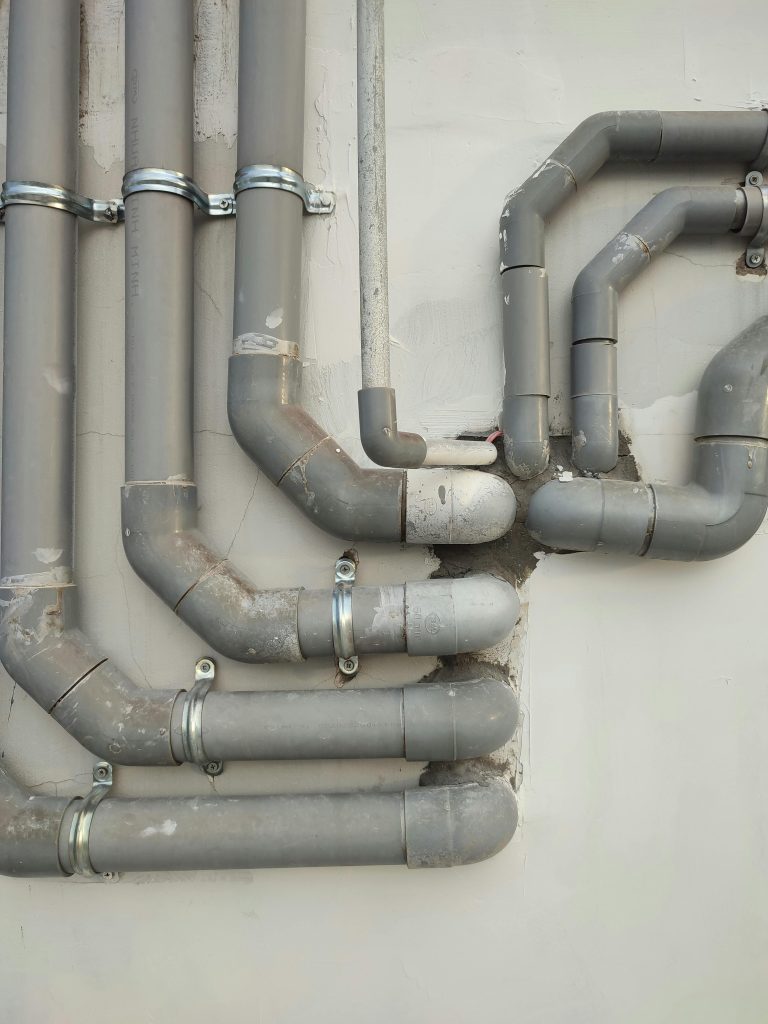As commercial properties rely on their location and its restrictions, commercial drainage systems are often a custom feature and therefore come in all shapes and sizes.
Therefore drainage systems will look different depending on the property, its purpose is the same, to properly drain all areas of the building or property, of any excess water.
You will find most of the drainage system underground, and so the design of your drainage system depends heavily on your property and building.
Although sewage might come to mind first, it is not just about the fluids running through the pipes inside your building. Commercial drainage systems are crucial to everything outside of the building too, think water in the soil, waste and rainwater. The way your drainage system is designed and built is essential to its maintenance.

The main components of a commercial drainage system include pipes, fittings, manholes, gullies and channels. These work together to collect and transport water away from the building or property.
- Pipes: The pipes used in commercial drainage systems are typically made of different materials such as PVC, concrete or clay. They come in various sizes and shapes depending on the needs of the building or property. These pipes are laid underground in a specific pattern to ensure proper flow of water.
- Fittings: Fittings are used to connect pipes together and change their direction so that they can fit into the designated drainage system layout. These fittings can be elbows, couplings, bends or tees.
- Manholes: Manholes are access points for maintenance workers to enter the drainage system for cleaning and repairs. They are usually located at key points along the system and are often covered with a heavy lid for safety purposes.
- Gullies: Gullies act as collection points for surface water runoff. They prevent flooding by collecting excess water from roofs, paved areas, or other surfaces and connecting them to the main drainage system via pipes.
- Channels: Channels are typically used to drain large open areas such as parking lots or loading docks where larger volumes of water need to be directed away from the building. They are often made of concrete and have a sloped surface to allow for proper drainage.
In addition to these main components, commercial drainage systems may also include special features like pumps, grease traps, or sediment basins depending on the specific needs of the property. These features help to manage and control water flow in areas where it may be more difficult to drain excess water.
Overall, commercial drainage systems are designed with functionality and efficiency in mind. They are essential for maintaining a safe and dry environment for businesses and properties, and their design should always be carefully planned to ensure proper functioning. Knowing what your drainage system looks like is a great start, but when was the last time you had any maintenance done? Get in touch to have us deal with your maintenance!
